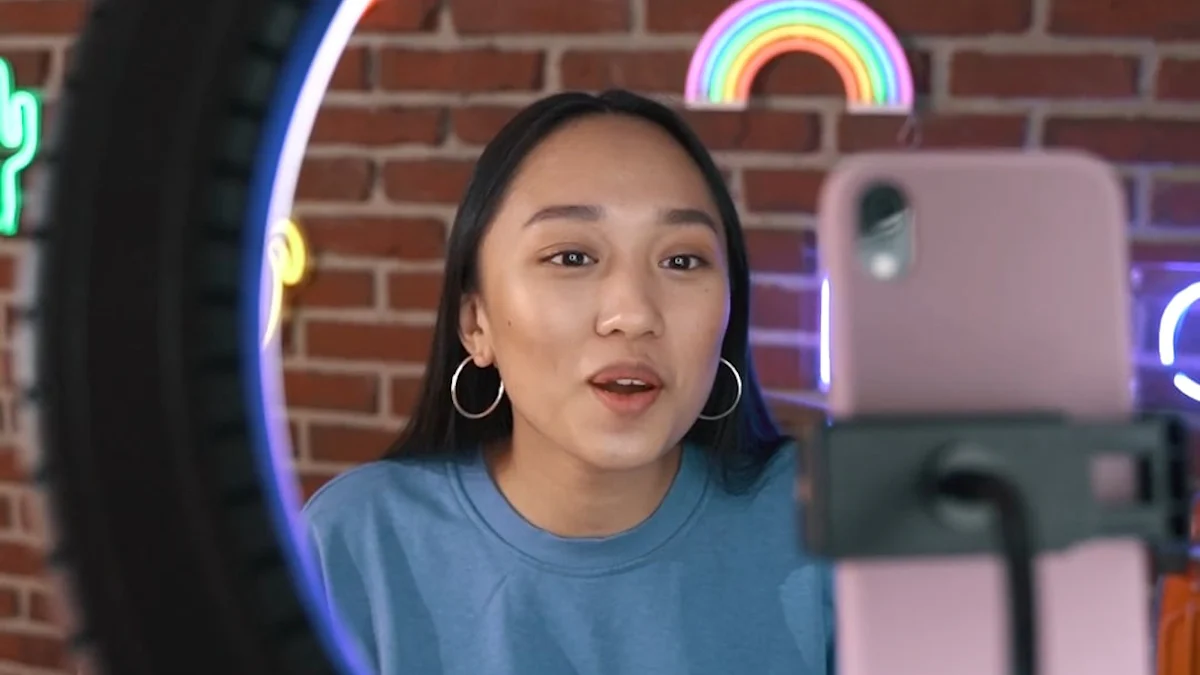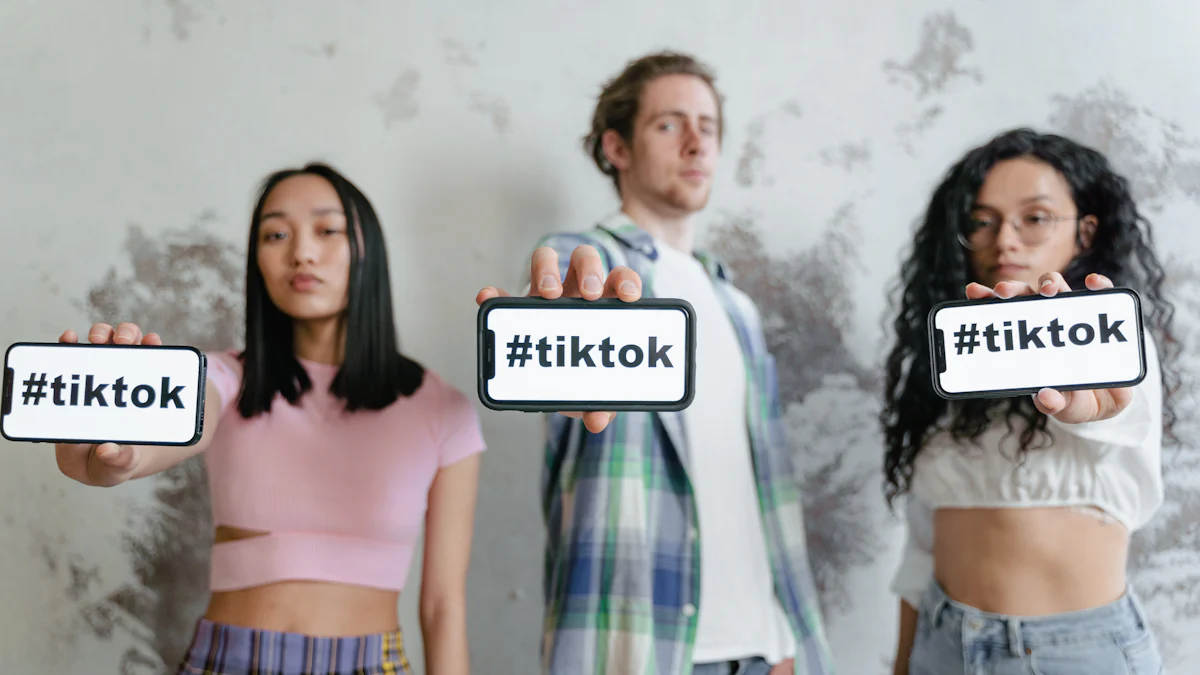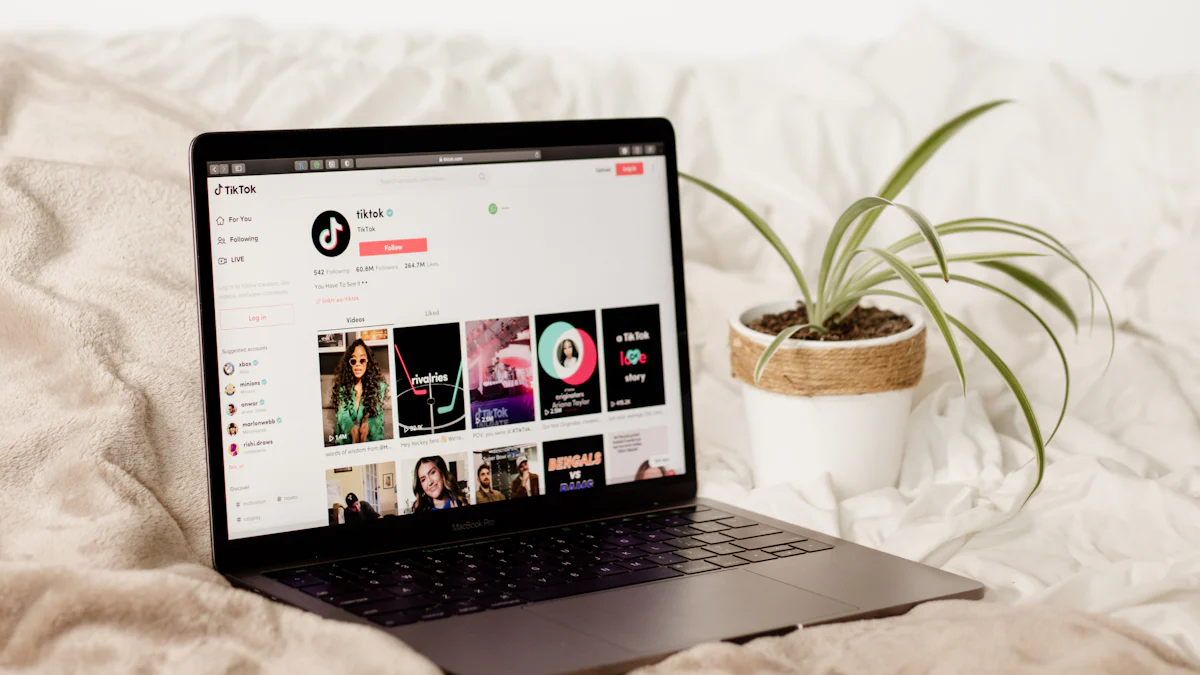Influencer Marketing ROI: Pros and Cons Explained

Evaluating influencer marketing ROI helps you understand the value your campaigns generate compared to the resources you invest. It measures how effectively your influencer partnerships drive profitability and brand growth. Studies show that businesses earn an average of $5.78 for every $1 spent on influencer marketing, making it a powerful tool for reaching audiences. Additionally, 92% of consumers trust influencers more than traditional ads, highlighting the authenticity they bring to your brand. By understanding both the benefits and challenges of influencer marketing, you can make informed decisions to maximize your returns.
Measuring Influencer Marketing ROI

Understanding how to measure the success of your influencer marketing efforts is crucial for maximizing your investment. By focusing on clear metrics and tools, you can evaluate the effectiveness of your campaigns and make data-driven decisions.
Defining ROI in Influencer Marketing
ROI, or return on investment, in influencer marketing refers to the value generated from your campaigns compared to the resources you allocate. It helps you determine whether your influencer partnerships are profitable and impactful. For example, businesses earn an average of $5.78 for every $1 spent on influencer marketing. This impressive figure highlights the potential of influencer marketing to deliver significant returns. Some brands even achieve up to $20 for every dollar spent, showcasing the scalability of this strategy.
To calculate ROI, you can use a simple formula:
ROI = (Total Revenue – Total Costs) / Total Costs x 100
This calculation provides a percentage that reflects the profitability of your campaigns. By defining ROI clearly, you can set realistic expectations and measure success effectively.
Key Metrics for Measuring Influencer Marketing ROI
Tracking the right metrics is essential for measuring influencer marketing ROI. These metrics provide insights into how well your campaigns perform and where improvements are needed. Here are some key metrics to consider:
- Engagement Rates: Measure likes, comments, shares, and other interactions on influencer posts. High engagement indicates strong audience interest.
- Follower Growth: Track the number of new followers gained during the campaign. This shows how well the influencer attracts attention to your brand.
- Sales and Revenue: Monitor the total sales generated through trackable links, discount codes, or affiliate programs. This directly ties your campaign to financial outcomes.
- Referral Traffic: Analyze website traffic driven by influencer content. Use tools like Google Analytics to identify referral sources.
- Impressions and Reach: Evaluate how many people viewed the influencer’s content. This helps you understand the campaign’s visibility.
By focusing on these metrics, you can gain a comprehensive view of your influencer marketing campaign ROI.
Tools and Platforms for Measuring Influencer Marketing ROI
Using the right tools simplifies the process of measuring ROI. These platforms help you collect data, analyze performance, and optimize future campaigns. Here are some popular options:
- Google Analytics: Track referral traffic, conversions, and user behavior on your website. This tool provides detailed insights into how influencer campaigns drive results.
- Social Media Analytics: Platforms like Instagram, TikTok, and YouTube offer built-in analytics to measure engagement, reach, and impressions.
- Influencer Marketing Platforms: Tools like Aspire, Upfluence, and Traackr streamline campaign management and provide ROI tracking features.
- Affiliate Tracking Software: Use software like Refersion or ShareASale to monitor sales generated through influencer-specific links or codes.
These tools allow you to gather accurate data and make informed decisions. By leveraging technology, you can ensure your influencer marketing efforts deliver maximum value.
Pros of Influencer Marketing Campaigns

Influencer marketing offers numerous advantages that can transform your brand’s visibility and profitability. By leveraging the power of influencers, you can create meaningful connections with your audience, expand your reach, and achieve cost-effective results.
Building Authentic Connections with Audiences
Influencers excel at building credibility and trust with their followers. Their recommendations often feel more genuine than traditional advertisements. When an influencer promotes your product, their audience perceives it as a personal endorsement rather than a sales pitch. This authenticity fosters stronger relationships between your brand and potential customers.
For instance, a makeup brand partnered with an influencer to promote its new product line. The influencer’s posts led to a 15% increase in website traffic and a 20% boost in product sales. This example highlights how influencers can effectively bridge the gap between brands and consumers by creating authentic connections.
By collaborating with influencers who align with your brand values, you can humanize your marketing efforts. This approach not only enhances your reputation but also builds long-term loyalty among your audience.
High Engagement and Reach
Influencers have a unique ability to drive social media reach and engagement. Their content often garners higher interaction rates compared to brand-generated posts. This is because influencers understand their audience’s preferences and tailor their content accordingly.
Through influencer marketing campaigns, you can tap into this high level of engagement. Influencers can amplify your message to a broader audience, increasing brand awareness and visibility. Platforms like Instagram and TikTok are particularly effective for this purpose, as they prioritize engaging and visually appealing content.
Consider the success story of Opatra, a skincare brand. By using an influencer marketing platform, the company elevated its brand visibility while saving costs. This demonstrates how influencers can maximize your campaign’s impact by reaching the right audience at the right time.
Cost-Effectiveness and Scalability
Influencer marketing is often more cost-effective than traditional advertising methods. Instead of spending large sums on TV or print ads, you can allocate your budget to influencers who deliver measurable results. Many influencers offer flexible pricing options, allowing you to scale your campaigns based on your budget.
Additionally, influencer marketing campaigns can be tailored to suit businesses of all sizes. Whether you’re a small startup or an established brand, you can find influencers who fit your needs and budget. This scalability makes influencer marketing accessible and practical for a wide range of industries.
By investing in influencer partnerships, you can achieve significant returns without overspending. For every dollar spent, businesses earn an average of $5.78 in revenue. This impressive ROI underscores the cost-effectiveness of influencer marketing as a strategy for driving sales and increasing brand awareness.
Cons of Influencer Marketing Campaigns
While influencer marketing offers significant benefits, it also comes with challenges that can impact your investment. Understanding these drawbacks helps you make informed decisions and avoid potential pitfalls in your influencer marketing campaign.
Challenges in Measuring ROI
Measuring the ROI of an influencer marketing campaign can be complex. Unlike traditional marketing channels, influencer campaigns often involve multiple variables that make it difficult to attribute results directly. For example, tracking conversions from influencer posts may require advanced tools or unique links, but even then, some sales or leads might go untracked. This lack of clarity can hinder your ability to evaluate the true effectiveness of your investment.
Additionally, influencer marketing ROI depends on both tangible and intangible factors. While metrics like revenue and engagement are measurable, the long-term impact on brand awareness or customer loyalty is harder to quantify. Without a clear measurement framework, you risk underestimating or overestimating the success of your campaign.
To overcome this challenge, you need to set specific goals and use reliable tools to track performance. Platforms like Google Analytics or influencer marketing software can help you monitor conversions, referral traffic, and other key metrics. By focusing on data-driven insights, you can better understand the return on your investment.
Risks of Mismatched Influencer Partnerships
Choosing the wrong influencer for your campaign can lead to wasted resources and missed opportunities. Not all influencers align with your brand values or target audience. A mismatch can result in low engagement, poor conversions, and even damage to your brand reputation. For instance, if an influencer’s followers don’t match your ideal customer profile, your campaign may fail to generate meaningful results.
Moreover, some influencers may lack authenticity or credibility. Their audience might not trust their recommendations, which reduces the impact of your marketing efforts. To avoid these risks, you should thoroughly vet potential influencers. Analyze their content, audience demographics, and past collaborations to ensure they align with your goals. Selecting the right influencer is crucial for maximizing your ROI and achieving genuine connections with your audience.
Potential for Fraud and Inauthentic Engagement
Fraud and fake engagement pose serious threats to the success of your influencer marketing campaign. Some influencers inflate their follower counts or engagement rates using bots or purchased interactions. According to reports, 25% of brands encounter issues related to influencer fraud, which can waste your budget and undermine your marketing efforts.
Inauthentic engagement not only reduces the effectiveness of your campaign but also erodes trust in influencer marketing as a whole. Consumers demand transparency and honesty from brands and influencers alike. If your audience perceives your campaign as inauthentic, it can harm your reputation and reduce future conversions.
To combat fraud, you should prioritize transparency and use tools to verify an influencer’s authenticity. Look for genuine interactions in their comments and analyze their follower growth patterns. Partnering with influencers who value honesty and integrity ensures your investment delivers real results and maintains the credibility of your brand.
Actionable Steps to Evaluate the Effectiveness of Influencer Marketing Campaigns
Evaluating the success of your influencer marketing campaign requires a structured approach. By following these actionable steps, you can ensure your campaigns deliver measurable results and help you boost ROI effectively.
Setting Clear Goals and KPIs
Start by defining specific goals for your influencer marketing campaign. Clear objectives provide direction and allow you to measure success accurately. Whether you aim to increase brand awareness, drive sales, or improve engagement, your goals should align with your overall marketing strategy.
Establish key performance indicators (KPIs) to track progress. Common KPIs include sales, engagement rates, and referral traffic. For example, 79.8% of businesses track sales generated from their influencer campaigns, while 70% measure ROI directly. These metrics help you evaluate both direct and indirect conversions, ensuring you capture the full impact of your efforts.
Pro Tip: Use trackable links, discount codes, or affiliate programs to monitor conversions and assess the effectiveness of your campaign.
By setting clear goals and KPIs, you create a roadmap for success and lay the foundation for maximizing ROI.
Selecting the Right Influencers
Choosing the right influencer is critical for achieving meaningful results. Look for influencers whose audience aligns with your target demographic. Analyze their content, engagement rates, and follower authenticity to ensure they can deliver value to your campaign.
A mismatched partnership can waste resources and harm your brand’s reputation. For instance, if an influencer’s followers don’t match your ideal customer profile, your campaign may fail to generate conversions. Thoroughly vet potential influencers by reviewing their past collaborations and audience feedback.
Survey Insight: Nearly 85.8% of businesses plan to dedicate a budget to influencer marketing in 2024, with 59.4% increasing their investment. This highlights the growing importance of selecting influencers who can drive measurable results.
By partnering with influencers who share your brand values, you can build trust with your audience and boost ROI effectively.
Monitoring Campaign Performance
Tracking engagement and conversions throughout your campaign is essential for evaluating success. Use analytics tools to monitor key metrics such as likes, comments, shares, and sales. Platforms like Google Analytics and social media analytics provide valuable insights into how your campaign performs.
Evaluate both direct and indirect conversions to understand the broader impact of your influencer marketing efforts. For example, referral traffic and impressions can indicate increased brand visibility, while sales data shows tangible financial outcomes. Regularly reviewing these metrics allows you to identify areas for improvement and optimize your strategy.
Did You Know? Businesses that actively monitor campaign performance are better equipped to make data-driven decisions and achieve higher ROI.
By staying proactive and analyzing results in real-time, you can refine your approach and ensure your influencer marketing campaign delivers maximum value.
Conducting Post-Campaign Analysis
Post-campaign analysis is essential for understanding the true impact of your influencer marketing efforts. By reviewing data and evaluating outcomes, you can identify strengths, weaknesses, and opportunities for improvement in future campaigns.
1. Gather and Organize Campaign Data
Start by collecting all relevant data from your campaign. This includes metrics such as engagement rates, sales figures, referral traffic, and impressions. Use tools like Google Analytics, social media analytics, or influencer marketing platforms to ensure accuracy. Organizing this data into categories—such as financial performance, audience engagement, and brand visibility—makes it easier to analyze.
Expert Insight: According to a Hoopla Marketing expert, research and analysis are critical components of successful influencer marketing. A structured approach to data collection ensures you don’t miss key insights.
2. Compare Results Against Goals and KPIs
Evaluate your campaign’s performance by comparing the results to the goals and KPIs you set at the beginning. Did the campaign meet or exceed expectations? For example, if your goal was to increase sales, review the revenue generated through influencer-specific links or discount codes. If brand awareness was the focus, assess metrics like impressions and follower growth.
Pro Tip: A Remoterocketship expert emphasizes the importance of a data-driven approach. Setting clear goals and KPIs allows you to measure success effectively and make informed decisions.
3. Assess Influencer Performance
Analyze the individual performance of each influencer involved in your campaign. Review their engagement rates, audience feedback, and contribution to overall results. Identify which influencers delivered the most value and aligned best with your brand. This helps you refine your selection process for future campaigns.
4. Identify Areas for Improvement
Look for patterns or gaps in your campaign data. Did certain types of content perform better than others? Were there any unexpected challenges, such as low engagement or mismatched audiences? Use these insights to adjust your strategy. For instance, if one platform outperformed others, consider focusing more resources there in the future.
5. Document Key Takeaways
Summarize your findings in a report. Highlight what worked well, what didn’t, and actionable steps for improvement. Share this report with your team to ensure everyone learns from the campaign. A well-documented analysis serves as a valuable reference for planning future influencer marketing initiatives.
Did You Know? Businesses that conduct thorough post-campaign analyses are more likely to achieve higher ROI in subsequent campaigns. Learning from past efforts ensures continuous improvement.
By conducting a detailed post-campaign analysis, you can maximize the value of your influencer marketing efforts. This process not only helps you refine your strategy but also ensures your future campaigns deliver even better results.
Measuring influencer marketing ROI is essential for understanding the value your campaigns deliver. It helps you identify what works, refine strategies, and make data-driven decisions to optimize future efforts. While influencer marketing offers authentic connections, high engagement, and cost-effectiveness, it also presents challenges like ROI measurement complexities and risks of fraud. By starting with clear goals, tracking results consistently, and adapting based on insights, you can maximize the success of your influencer marketing campaign. Continuous monitoring ensures your marketing efforts remain impactful and aligned with your objectives.
FAQ
What is influencer marketing ROI, and why does it matter?
Influencer marketing ROI measures the value your campaigns generate compared to the resources you invest. It helps you understand whether your influencer partnerships are profitable and effective. By calculating ROI, you can make informed decisions, optimize your strategies, and ensure your marketing efforts deliver measurable results.
What's the best way to measure influencer marketing ROI?
The best way to measure ROI involves tracking key metrics like sales, engagement rates, and referral traffic. Use tools such as Google Analytics or influencer marketing platforms to monitor performance. A simple formula to calculate ROI is:
ROI = (Total Revenue – Total Costs) / Total Costs x 100
This formula provides a clear percentage that reflects your campaign's profitability.
How can I improve influencer marketing ROI?
Improving ROI starts with setting clear goals and selecting the right influencers. Focus on influencers whose audience aligns with your target demographic. Use trackable links, discount codes, or affiliate programs to monitor conversions. Regularly analyze campaign performance and adjust your strategy based on data insights.
How do brands achieve good ROI from their influencer campaigns?
Brands achieve good ROI by aligning their campaigns with specific objectives. For example:
- A skincare brand partnered with influencers to promote its products, resulting in increased website traffic and sales.
- A fitness company used discount codes shared by influencers, driving measurable conversions.
- A tech brand collaborated with niche influencers, boosting engagement and brand awareness.
These examples highlight the importance of strategic planning and execution.
What are the common challenges in measuring influencer marketing ROI?
Measuring ROI can be challenging due to factors like untracked conversions and intangible benefits such as brand awareness. Some sales may occur outside trackable links or codes, making it harder to attribute results directly. Using reliable tools and setting clear KPIs can help overcome these challenges.
How do I choose the right influencer for my campaign?
To choose the right influencer, analyze their audience demographics, engagement rates, and content quality. Ensure their values align with your brand. Review their past collaborations to assess their credibility and authenticity. A well-matched influencer can significantly boost your campaign's success.
What tools can I use to track influencer marketing ROI?
Several tools simplify ROI tracking:
- Google Analytics: Tracks referral traffic and conversions.
- Social Media Analytics: Measures engagement and reach on platforms like Instagram and TikTok.
- Influencer Marketing Platforms: Tools like Aspire and Upfluence provide detailed ROI insights.
- Affiliate Tracking Software: Monitors sales generated through influencer-specific links or codes.
These tools help you gather accurate data and optimize your campaigns.
How long should I wait to measure the effectiveness of an influencer campaign?
Allow a measurement window of 30 to 60 days to assess your campaign's effectiveness. This timeframe captures both immediate and delayed results, such as sales and brand awareness. Regular monitoring during this period ensures you gather comprehensive insights.
Can small businesses benefit from influencer marketing?
Yes, small businesses can benefit greatly from influencer marketing. Many influencers offer flexible pricing, making it accessible for smaller budgets. By collaborating with micro-influencers, small businesses can reach niche audiences, build trust, and achieve measurable results without overspending.
What are the risks of influencer marketing, and how can I avoid them?
Risks include mismatched partnerships, fraud, and inauthentic engagement. To avoid these issues:
- Vet influencers thoroughly by analyzing their audience and past work.
- Use tools to verify follower authenticity and engagement rates.
- Partner with influencers who value transparency and align with your brand.
Taking these steps ensures your campaigns deliver genuine results.
See Also
Evaluating the Benefits and Drawbacks of Influencer Marketing ROI
A Comprehensive Guide to Influencer Marketing ROI
Weighing the Advantages and Disadvantages of Smaller Influencers
Evaluating the Benefits and Risks of TikTok Influencer Marketing
Exploring the Advantages and Disadvantages of Influencer Whitelisting
